Retro Replay Review
Gameplay
Starquake casts you in the role of BLOB, the Bio-Logically Operated Being, with a singular mission: prevent an unstable planet from tearing itself apart. The core objective revolves around locating and retrieving a specific assortment of items, then transporting them to the planet’s heart before time runs out. What adds a layer of intrigue is the randomized combination of required items on each playthrough. This procedural twist keeps the hunt fresh, forcing you to memorize the sprawling map and think fast when item lists shift.
(HEY YOU!! We hope you enjoy! We try not to run ads. So basically, this is a very expensive hobby running this site. Please consider joining us for updates, forums, and more. Network w/ us to make some cash or friends while retro gaming, and you can win some free retro games for posting. Okay, carry on 👍)
Exploration forms the backbone of Starquake’s gameplay loop. The world unfolds across 512 side-view screens arranged in a 16×32 grid, encouraging methodical mapping and route-planning. While you can traverse this labyrinth on foot, a coded teleportation system greatly enhances mobility once you crack the four-digit access codes. Tracking down these codes becomes a mini-quest in its own right, rewarding diligent searchers with shortcuts through otherwise back-breaking runs across the same territory.
Adding challenge to your expedition are the planet’s native lifeforms—ever-evolving creatures that patrol corridors and chambers. Early encounters are manageable, but as you edge closer to the core, enemies display increasingly complex movement patterns and faster reaction times. To counter this, BLOB wields a basic projectile weapon capable of stunning or destroying most threats, though resources are finite. Choosing when to stand your ground or tactically evade becomes a frequent test of patience and skill.
Vertical navigation hinges on a limited supply of floating platforms. Deploying one elevates BLOB to otherwise unreachable heights for a few precious seconds before it vanishes forever. This fleeting mechanic not only demands precise timing but also careful conservation of your platform stock, especially when backtracking without teleport codes is time-consuming. The interplay between exploration, combat, and platform-puzzle design affords Starquake a satisfying complexity that rewards both strategic thinking and nimble reflexes.
Graphics
Despite its roots in the early days of home computing, Starquake’s visuals remain a testament to efficient sprite work and thoughtful level design. The game uses a limited color palette but applies it cleverly, differentiating hazards, items, and terrain with high contrast. Walls, pillars, and platforms display crisp edges, making navigation across the 512-screen grid surprisingly intuitive even when rooms look similar at first glance.
Character and enemy sprites are small yet expressive, with simple animation frames that still convey motion and intent. The ever-shifting behaviors of creatures—skittering, lunging, and pacing—feel alive within the constraints of the hardware. Environmental details such as flickering lights near volcanic fissures or metallic glints on teleport panels add atmospheric depth, subtly reminding you of the clock ticking down to planetary destruction.
Loading screens between game sessions include minimalist text and rudimentary map outlines, serving more as functional pauses than graphical showpieces. However, these moments also let you catch your breath and plan your next foray. In-game transitions are seamless, with no lengthy delays or stuttering scroll, making the journey from one sector to the next fluid and engaging rather than mechanical.
Story
Starquake’s narrative premise is straightforward yet compelling: a rogue planet on the brink of self-annihilation, and a lone bio-engineered hero tasked with preventing total environmental collapse. BLOB’s origin story—created by an advanced civilization—remains largely untold in-game, sparking the imagination of players who fill in the blanks about his creators and the stakes at play.
The fractured, urgent nature of the mission is mirrored in the game world’s layout. Each region feels like a pressure chamber edging closer to meltdown, with visual cues of rising magma flows and broken infrastructure reinforcing the escalating tension. Although text prompts are scarce, the atmospheric design and the ticking timer forge a tight bond between player and planet, grounding the act of item retrieval in a race against annihilation.
Intermittent audio cues—alarm beeps, creature screeches, and the hum of teleportation—heighten the narrative urgency without relying on cutscenes or dialogue. This minimalist storytelling approach places you in the pilot’s seat, letting you internalize the drama through your actions. Every success in recovering an item and returning it to the core feels like a crucial victory in a high-stakes survival epic.
Overall Experience
Playing Starquake is an exercise in strategic exploration and adaptive problem-solving. The vast 16×32 grid invites thorough map-making, while the randomization of required items and teleport codes ensures each session remains unpredictable. This loop of discovery, challenge, and incremental mastery delivers high replay value even decades after the game’s original release.
Difficulty ramps up sharply, especially near the core where enemy AI becomes more aggressive and platform resources run thin. Newcomers may find the initial learning curve steep, but perseverance rewards you with a satisfying sense of progress as you refine routes and memorization patterns. Teleport codes, once decoded, transform the gameplay rhythm, offering relief from repetitive backtracking and empowering creative new strategies.
Control responsiveness is solid, with precise jumps and weapon firings that feel fair. The minimalist interface keeps distractions to a minimum, letting you focus on map icons, remaining platform count, and item lists. Although dated by modern standards, Starquake’s blend of exploration, action, and survival mechanics holds up remarkably well as an arcade-adventure classic.
Ultimately, Starquake delivers a tightly woven experience that challenges both the mind and reflexes. Its retro charm, combined with randomly changing objectives and a ticking threat of planetary destruction, makes it an engrossing title for anyone seeking a deep, old-school adventure. If you enjoy methodical map exploration, emergent difficulty, and the thrill of averting catastrophe under pressure, Starquake remains a must-play journey through pixel-perfect peril.
 Retro Replay Retro Replay gaming reviews, news, emulation, geek stuff and more!
Retro Replay Retro Replay gaming reviews, news, emulation, geek stuff and more!

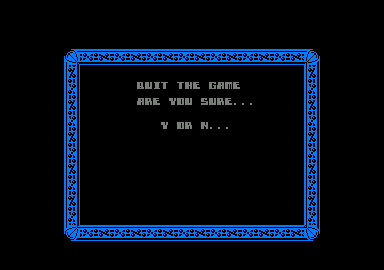
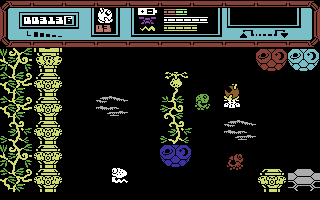
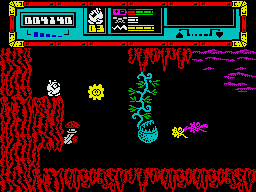

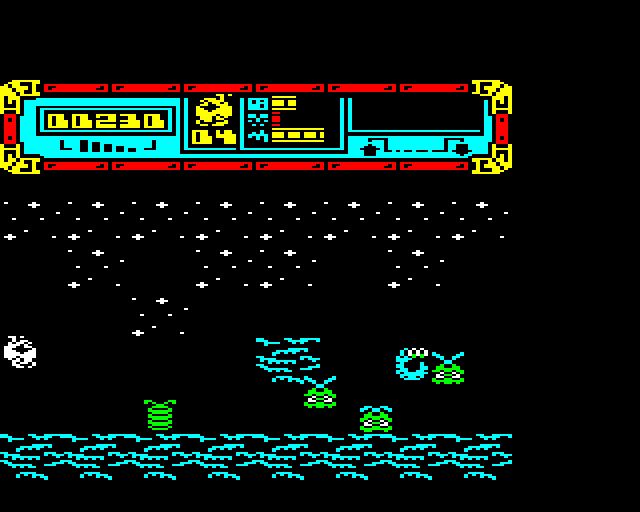


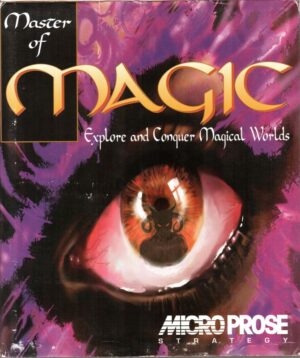
Reviews
There are no reviews yet.